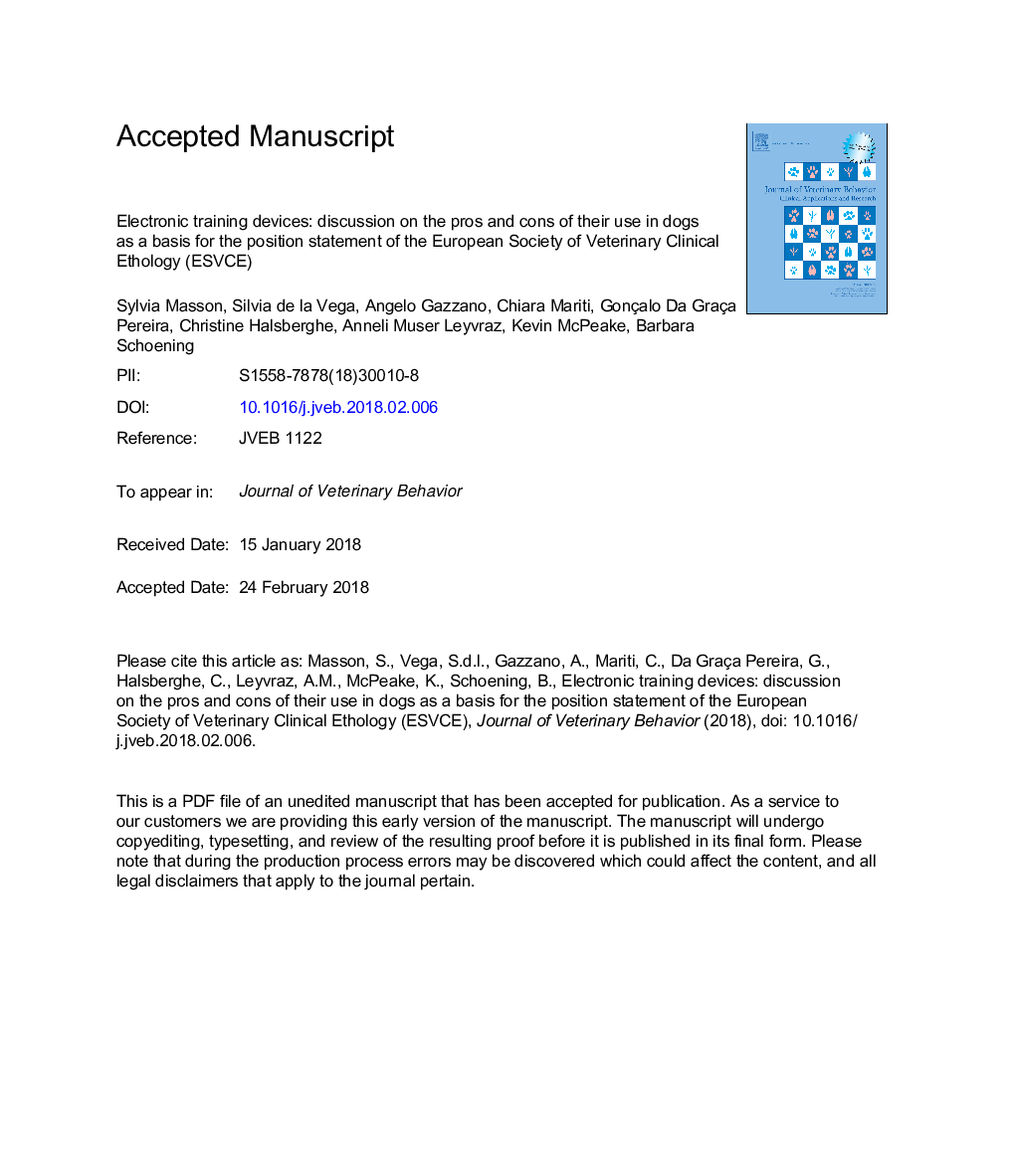| کد مقاله | کد نشریه | سال انتشار | مقاله انگلیسی | نسخه تمام متن |
|---|---|---|---|---|
| 8484086 | 1551591 | 2018 | 13 صفحه PDF | دانلود رایگان |
عنوان انگلیسی مقاله ISI
Electronic training devices: Discussion on the pros and cons of their use in dogs as a basis for the position statement of the European Society of Veterinary Clinical Ethology
ترجمه فارسی عنوان
دستگاه های آموزش الکترونیکی: بحث در مورد مزایا و معایب استفاده از آنها در سگ ها به عنوان پایه ای برای بیانیه موضع انجمن اروپایی اکتشافی بالینی دامپزشکی
دانلود مقاله + سفارش ترجمه
دانلود مقاله ISI انگلیسی
رایگان برای ایرانیان
کلمات کلیدی
رفاه سگ، آموزش سگ، تکنیک های آموزش بی رحمانه، یقه الکتریکی،
موضوعات مرتبط
علوم زیستی و بیوفناوری
علوم کشاورزی و بیولوژیک
علوم دامی و جانورشناسی
چکیده انگلیسی
In recent years, the affirmation of a greater ethical sense and research generating a better knowledge of the mechanisms of animal learning, evidence of the existence of an animal mind, and studies on the dog-human attachment bond have led to changes in the dog-human relationship. These changes have caused a notable improvement in dog training techniques. Increased emphasis on dog welfare, overall, led to questioning of many training techniques and tools that used aversive means. Recent research on the use of aversive training devices has been performed and, on this basis, it has been possible to create guidelines to inform the public about utility and the possible detriments related to the use of these devices as a tool in dog training. The European Society of Clinical Animal Ethology has released a public position statement based on the current scientific information available on e-collars, punitive training techniques, and canine welfare. This study elaborates and discusses the arguments “pro and contra the use of e-collars and aversive training methods” leading to the statement in more detail. As a conclusion, European Society of Clinical Animal Ethology strongly opposes the use of e-collars in dog training and urges all European countries to take an interest in and position on this welfare matter.
ناشر
Database: Elsevier - ScienceDirect (ساینس دایرکت)
Journal: Journal of Veterinary Behavior - Volume 25, MayâJune 2018, Pages 71-75
Journal: Journal of Veterinary Behavior - Volume 25, MayâJune 2018, Pages 71-75
نویسندگان
Sylvia Masson, Silvia de la Vega, Angelo Gazzano, Chiara Mariti, Gonçalo Da Graça Pereira, Christine Halsberghe, Anneli Muser Leyvraz, Kevin McPeake, Barbara Schoening,
